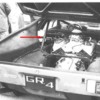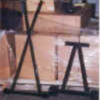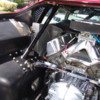quote:
Originally posted by comp2:
...What about under car frame stiffiners? Do they help much?...
You know yourself from jacking the car up, the front end is very stiff, its boxed very well. I seriously doubt the "under car" or "in trunk" braces sold by the vendors produce any
measurable results in the front end.
Listen, can you hear it, the sound of toes crunching from being stepped on? Ha, ha, ha .....
The brace sold for the rear of the car, that mounts between the sub-frame rails, probably does add a bit of stiffness to the lower control arm mounts, for more stable toe and camber settings. But it does nothing to resolve the major problem with the chassis. So installing that brace without first doing something about the chassis' major flexing problem, is like sticking your finger in a crack while the dam crumbles around you.
There it goes again, that sound of toes being stepped on. Sorry guys, I have to call them as I see them.
Your friend on the DTBB







